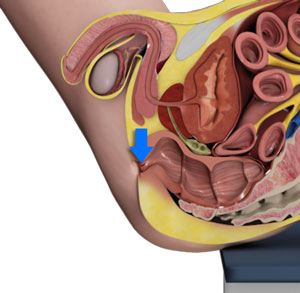
Sphincter repair surgery, also called sphincteroplasty, is a surgical technique for the repair of weak or damaged anal sphincter muscles which regulate your bowel movements. In this procedure, the injured or torn area of the sphincter muscles is removed, and the healthy ends are sutured together to strengthen them. It provides relief to people with bowel incontinence, also called faecal incontinence, a condition where the person cannot control bowel movements leading to involuntary leakage from the rectum.
What are the Causes of Bowel/Faecal Incontinence?
Bowel/faecal incontinence develops when your anal sphincter muscles become weak or damaged. This may happen due to:
- Rectal prolapse: a condition where your rectum slides downwards or outside the anus
- Childbirth
- Haemorrhoids
- Injury to the nerves supplying the rectum
- Chronic constipation or diarrhoea
- Advancing age
- Previous surgery
Pre-Operative Preparation for Sphincter Repair Surgery
Your surgeon will review your medical history and symptoms. You will be recommended imaging tests such as an endo-anal ultrasound for an accurate diagnosis. An endo-anal ultrasound involves the insertion of a probe inside the anus which generates internal images to chart a suitable plan for your treatment.
You will be given an oral bowel preparation 24 hours before your surgery to clear your bowels of faecal matter, so your surgeon has a clear view to work. You should consume only clear liquids such as water, lemonade, or energy drinks before your surgery.
Procedure of Sphincter Repair Surgery
Surgery is recommended when conservative treatment of bowel/faecal incontinence is unsuccessful, and the condition is adversely affecting the patient’s quality of life. A sphincter repair surgery is performed under general anaesthesia in a prone jack-knife position where the patient is placed on their stomach and the head and legs are positioned at a lower angle with the hips raised by placing a roll underneath. The different types of sphincter repair surgeries include:
Sphincteroplasty, also called Sphincter Reconstruction: In this procedure, an incision is made in the perineal area, between the rectum and the vulva in females or between the rectum and scrotum in males, to access to the anal sphincter. Once the sphincter is identified, the torn muscles and damaged tissues are removed. The remaining ends of the anal sphincter are stitched together in an overlapping fashion to strengthen the sphincter muscles and tighten the sphincter. Upon completion, the incision is closed.
Dynamic Graciloplasty: In this procedure, your surgeon will take a patch of the gracilis muscle around the anus and wrap it around the sphincter to restore the muscle tone to the sphincter. Sometimes the muscle patch can be taken from the inner thigh.
Sphincter Replacement: In this procedure, your surgeon will replace the damaged anal sphincter with an artificial anal sphincter. The artificial sphincter is an inflatable device that is implanted around your anal canal. It comes with an external pump which is manually operated when needed.
The artificial sphincter remains inflated while it collects stools. This keeps the anal sphincter shut tightly closed. Once you get the urge to defecate, you use the pump to deflate the device and this releases the stool. Then, the device re-inflates itself.
Sphincter repair surgery usually lasts for about 40-60 minutes.
Recovery and Post-Operative Care after Sphincter Repair Surgery
You may be required to stay at the hospital overnight or 24 hours. You may experience mild pain and discomfort which will subside gradually. After your sphincter repair surgery, you will be given specific instructions to regain normal bowel movements.
- You will be trained on pelvic floor exercises to restore muscle strength and improve sphincter control.
- You will be recommended to follow a particular schedule for defecation to improve your bowel control.
- You will be instructed to improve your dietary habits to avoid constipation and diarrhoea.
- Complete recovery may take six weeks.
Avoid the following until complete recovery:
- Straining during defecation to prevent pressure on your sphincter muscles
- Heavy lifting of more than 10 lbs
- Sexual intercourse
- Tub baths
What are the Risks and Complications of Sphincter Repair Surgery?
As with any surgical procedure, sphincter repair surgery may also be associated with certain risks and complications. These include:
- Infection
- Bleeding
- Formation of blood clots
- Injury to the surrounding organs such as the bladder, the ureter
- Tear in the incision and need for revision surgery






